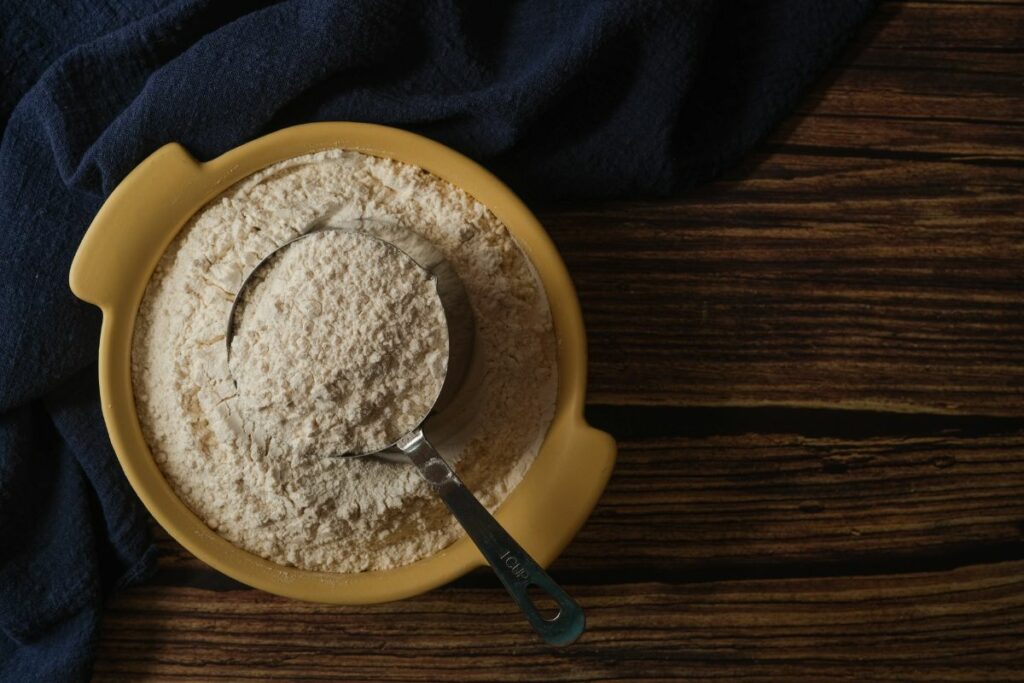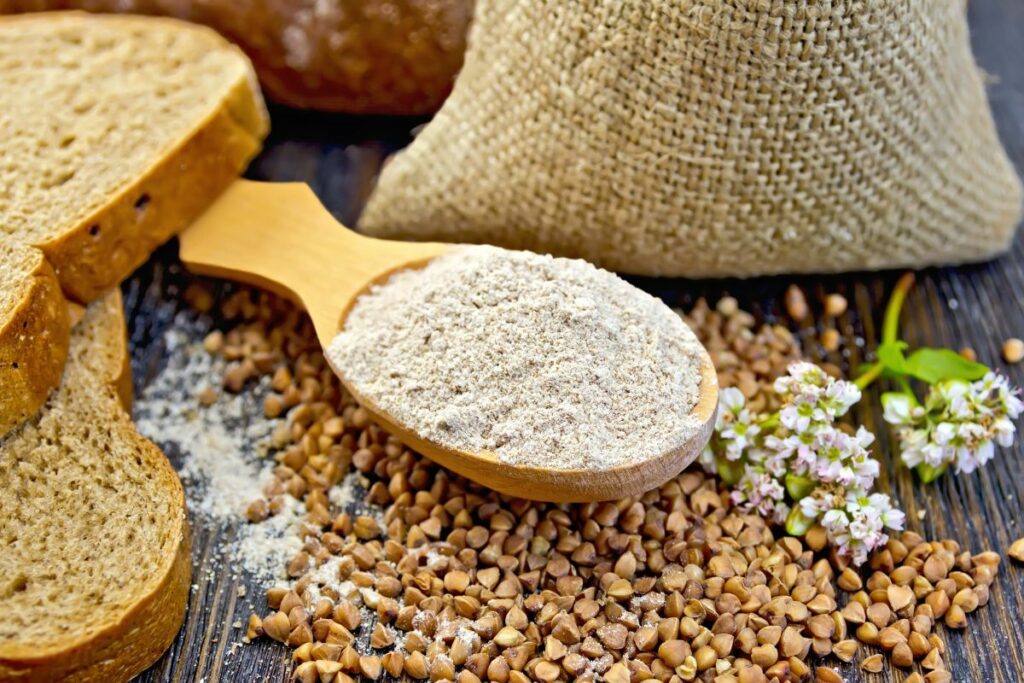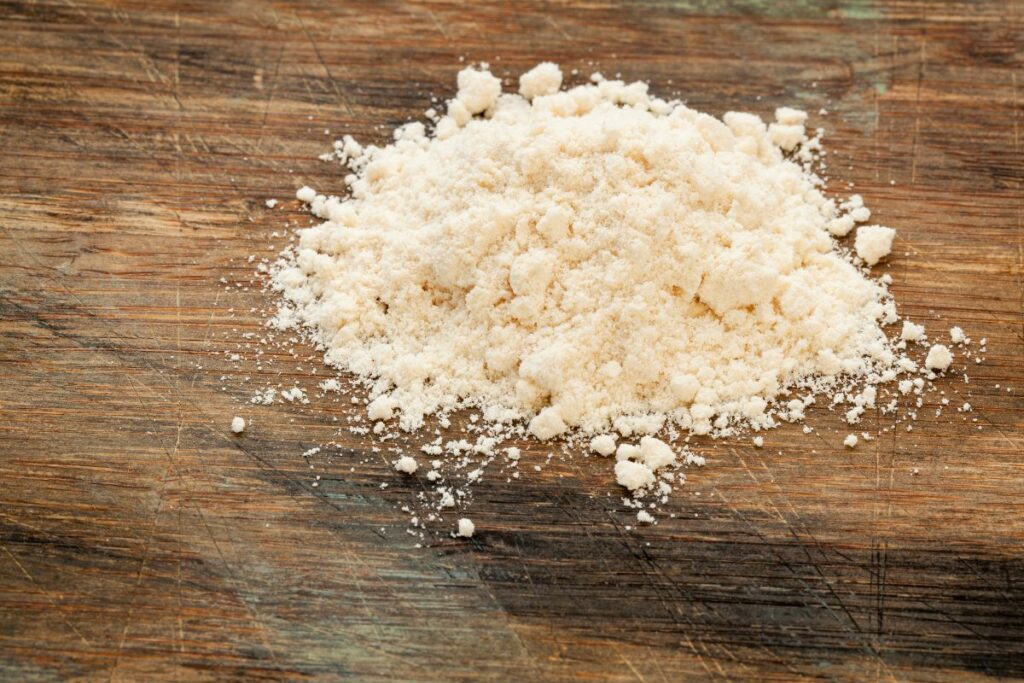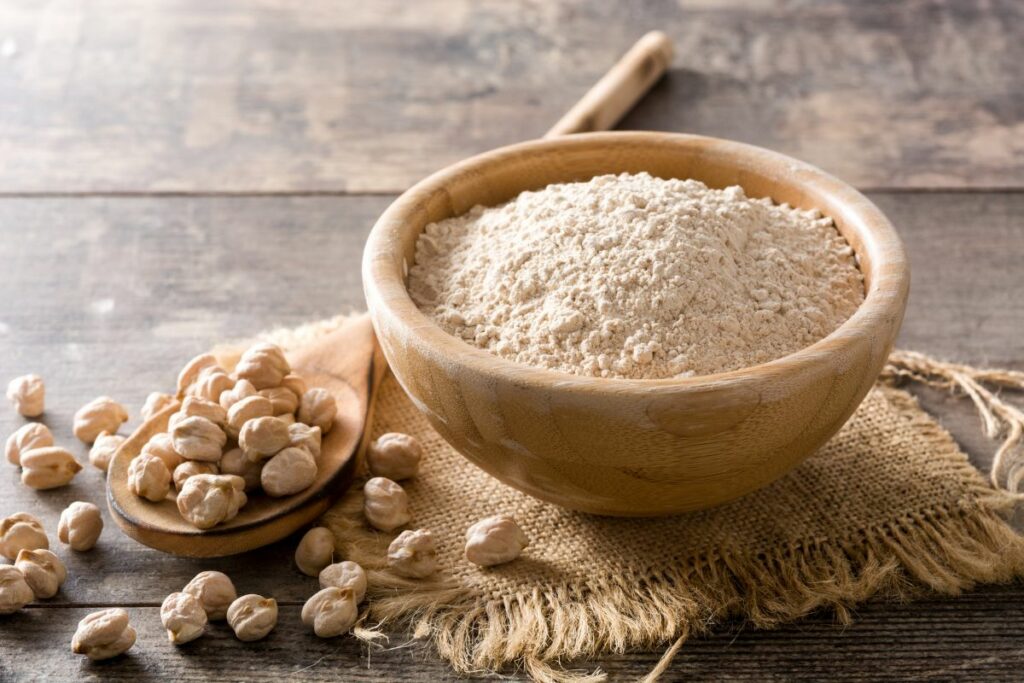Sorghum flour is a popular gluten-free flour that is often used in baking. However, it may not be readily available in all areas. In such cases, it is important to know about the best sorghum flour substitutes that can be used in recipes.
There are several options for substituting sorghum flour, including xanthan gum, potato starch, tapioca flour, rice flour, guar gum, almond flour, quinoa flour, chickpea flour, coconut flour, and buckwheat flour. Each of these substitutes offers almost the same benefits as sorghum flour and can be used in a variety of recipes. However, it is important to note that the amount of substitute used may vary depending on the recipe and personal preference.
For those who are allergic to certain flours or on a low histamine diet, potato flour or starch is a great gluten-free sorghum flour alternative. It has a light and fluffy texture that works well in baked goods. Additionally, other substitutes such as cornflour, almond flour, coconut flour, teff flour, soy flour, arrowroot powder, oat flour, and quinoa flour are also great options. With these substitutes, it is possible to create delicious gluten-free baked goods without sacrificing taste or texture.

Contents
- 1 Understanding Sorghum Flour
- 2 Sorghum Flour in Gluten-Free Baking
- 3 Why Substitute Sorghum Flour
- 4 Sorghum Flour Substitutes
- 5 Using Substitutes in Different Recipes
- 6 Considerations in Choosing Substitutes
- 7 Storing Sorghum Flour and Its Substitutes
- 8 Nutritional Comparison of Sorghum Flour and Its Substitutes
- 9 Culinary Uses of Sorghum Flour and Its Substitutes
Understanding Sorghum Flour
Sorghum flour is a gluten-free flour made from sorghum, a cereal grain that is widely cultivated in Africa and Asia. It is becoming increasingly popular as a substitute for wheat flour due to its nutritional value and low glycemic index.
Sorghum flour is an excellent source of fiber, protein, and minerals such as iron, magnesium, and calcium. It also contains antioxidants and vitamin E, which are essential for maintaining good health. Compared to wheat flour, sorghum flour has a lower protein content and fewer carbs. This makes it an ideal flour for people who are trying to maintain a healthy weight or manage their blood sugar levels.
One of the most significant benefits of sorghum flour is its low glycemic index. This means that it does not cause a rapid spike in blood sugar levels, making it a great option for people with diabetes or those who are trying to avoid sugar crashes.
Sorghum flour is also beneficial for heart health due to its high amino acid content. Amino acids are essential for building and repairing muscle tissue, and they also play a vital role in maintaining healthy heart function.
In summary, sorghum flour is a nutritious and versatile flour that is an excellent alternative to wheat flour. It is gluten-free, high in fiber, protein, and minerals, and has a low glycemic index. Incorporating sorghum flour into your diet can provide many health benefits, including improved heart health and blood sugar management.
Sorghum Flour in Gluten-Free Baking
Sorghum flour is a nutritious gluten-free flour that is a great alternative to wheat flour. It is a good source of protein, fiber, and antioxidants. Sorghum flour is a versatile flour that can be used in a variety of gluten-free baked goods such as cakes, bread, muffins, waffles, and pastries.
When substituting sorghum flour for wheat flour in recipes, it is important to note that sorghum flour has a slightly sweet and nutty flavor. Therefore, it is best to use a combination of flours to achieve the desired taste and texture.
Here are some examples of flour combinations that work well in gluten-free baking:
- Sorghum flour, rice flour, tapioca flour, and potato starch
- Sorghum flour, buckwheat flour, and almond flour
- Sorghum flour, oat flour, and corn starch
It is also possible to purchase pre-mixed gluten-free baking flours that contain sorghum flour. These blends may contain other gluten-free flours such as rice flour, potato starch, and tapioca flour.
Sorghum flour can be used in a variety of gluten-free baked goods such as pancakes, bread, muffins, waffles, and pastries. It is also a key ingredient in injera, a traditional Ethiopian flatbread, and fritters.
In summary, sorghum flour is a nutritious and versatile gluten-free flour that can be used in a variety of baked goods. When substituting sorghum flour for wheat flour, it is best to use a combination of flours to achieve the desired taste and texture.

Why Substitute Sorghum Flour
Sorghum flour is a popular gluten-free flour that is used in many recipes. However, there are several reasons why someone might want to substitute sorghum flour.
Celiac Disease
People who have celiac disease or gluten intolerance cannot consume gluten-containing products. Sorghum flour, being gluten-free, is a great alternative for such individuals. However, some people with celiac disease may also have an intolerance to sorghum. In such cases, they need to find substitutes that work for them.
Keto Diet
The keto diet is a low-carb, high-fat diet that is popular for weight loss. Sorghum flour is a high-carb flour and is not suitable for the keto diet. People on the keto diet can use low-carb flour substitutes like almond flour, coconut flour, or flaxseed meal instead of sorghum flour.
Low-Carb Diets
Low-carb diets are popular among people who want to lose weight or manage their blood sugar levels. Sorghum flour is not suitable for low-carb diets as it is high in carbs. People on low-carb diets can use low-carb flour substitutes like almond flour, coconut flour, or flaxseed meal instead of sorghum flour.
Sorghum Flour Substitutes
There are several sorghum flour substitutes that can be used in recipes. Some popular substitutes include almond flour, coconut flour, rice flour, quinoa flour, and chickpea flour. These flours have different nutritional profiles, textures, and flavors, so it’s essential to choose the right substitute for the recipe.
In summary, sorghum flour is a popular gluten-free flour, but it may not be suitable for everyone. People with celiac disease, on the keto diet, or low-carb diets may need to find substitutes that work for them. There are several sorghum flour substitutes available, and it’s essential to choose the right one for the recipe.

Sorghum Flour Substitutes
Sorghum flour is a popular gluten-free flour that is used in various baked goods, including bread, cakes, and cookies. However, it may not be easily available in all regions. Fortunately, there are several substitutes that can be used in place of sorghum flour. Here are some of the best sorghum flour substitutes:
- Rice flour: Rice flour is a versatile gluten-free flour that can be used in many recipes. It has a mild flavor and can be used in place of sorghum flour in most recipes. Brown rice flour is a healthier option as it contains more nutrients than white rice flour.
- Almond flour: Almond flour is a popular gluten-free flour that is made from ground almonds. It has a slightly sweet, nutty flavor and is a great substitute for sorghum flour in cakes, cookies, and bread.
- Tapioca flour: Tapioca flour is a starchy flour that is made from the cassava root. It has a light, fluffy texture and can be used in place of sorghum flour in recipes that require a lighter texture, such as cakes and bread.
- Quinoa flour: Quinoa flour is a nutritious gluten-free flour that is made from ground quinoa seeds. It has a slightly nutty flavor and can be used in place of sorghum flour in recipes that require a denser texture, such as bread.
- Coconut flour: Coconut flour is a gluten-free flour that is made from ground coconut meat. It has a sweet, nutty flavor and can be used in place of sorghum flour in recipes that require a denser texture, such as bread.
- Buckwheat flour: Buckwheat flour is a gluten-free flour that is made from ground buckwheat seeds. It has a slightly nutty flavor and can be used in place of sorghum flour in recipes that require a denser texture, such as bread.
- Chickpea flour: Chickpea flour is a gluten-free flour that is made from ground chickpeas. It has a slightly nutty flavor and can be used in place of sorghum flour in recipes that require a denser texture, such as bread.
- Oat flour: Oat flour is a gluten-free flour that is made from ground oats. It has a slightly sweet flavor and can be used in place of sorghum flour in recipes that require a denser texture, such as bread.
- Potato flour: Potato flour is a gluten-free flour that is made from dried potatoes. It has a light, fluffy texture and can be used in place of sorghum flour in recipes that require a lighter texture, such as cakes and bread.
- Millet flour: Millet flour is a gluten-free flour that is made from ground millet seeds. It has a slightly nutty flavor and can be used in place of sorghum flour in recipes that require a denser texture, such as bread.
- Xanthan gum: Xanthan gum is a popular gluten-free thickening agent that can be used in place of sorghum flour in recipes that require a binding agent. It is often used in gluten-free baking as it helps to give the baked goods a more elastic texture.
- Potato starch: Potato starch is a gluten-free starch that can be used in place of sorghum flour in recipes that require a binding agent. It has a light, fluffy texture and can be used in place of sorghum flour in recipes that require a lighter texture, such as cakes and bread.
- Brown rice flour: Brown rice flour is a healthier alternative to white rice flour as it contains more nutrients. It has a slightly nutty flavor and can be used in place of sorghum flour in most recipes.
- Garbanzo flour: Garbanzo flour, also known as chickpea flour, is a gluten-free flour that is made from ground garbanzo beans. It has a slightly nutty flavor and can be used in place of sorghum flour in recipes that require a denser texture, such as bread.
- Teff flour: Teff flour is a gluten-free flour that is made from ground teff seeds. It has a slightly nutty flavor and can be used in place of sorghum flour in recipes that require a denser texture, such as bread.
- Amaranth flour: Amaranth flour is a gluten-free flour that is made from ground amaranth seeds. It has a slightly nutty flavor and can be used in place of sorghum flour in recipes that require a denser texture, such as bread.
- All-purpose flour: All-purpose flour is a wheat-based flour that can be used in place of sorghum flour in recipes that do not require a gluten

Using Substitutes in Different Recipes
When it comes to using substitutes for sorghum flour, it’s important to keep in mind that different recipes may require different types of substitutes. For example, in recipes that require a binding agent, such as meatballs or veggie burgers, xanthan gum or guar gum can be used as a substitute for sorghum flour. On the other hand, in recipes that require a starch, such as soups or stews, potato starch or tapioca flour can be used as a substitute.
In Asian cuisine, rice flour is a common substitute for sorghum flour. It can be used in dishes such as dumplings, noodles, and bread. Almond flour and coconut flour are also great substitutes in baking recipes, especially for those who follow a gluten-free diet. They can be used in recipes such as cakes, cookies, and bread.
It’s important to note that when using substitutes, the texture and taste of the final product may be slightly different. For example, using cornflour as a substitute for sorghum flour in a recipe may result in a slightly different texture and taste. However, this can be a great opportunity to experiment with different ingredients and find new flavors and textures.
In sauces and gravies, arrowroot powder can be used as a thickener instead of sorghum flour. It’s also a great substitute for cornstarch. It’s important to note that arrowroot powder should be added at the end of the cooking process to prevent it from breaking down and losing its thickening properties.
Overall, there are many substitutes for sorghum flour that can be used in different recipes. It’s important to choose the right substitute based on the recipe and the desired outcome. With a bit of experimentation, it’s possible to create delicious dishes using alternative ingredients.
Considerations in Choosing Substitutes
When choosing a substitute for sorghum flour, there are several considerations to keep in mind. These include the flavor profile, moisture content, texture, and volume of the substitute.
Some substitutes, such as almond flour, have a nutty flavor that can add a unique taste to baked goods. Others, like tapioca flour, have a mild flavor that won’t overpower other ingredients in a recipe. For those who prefer a flavorless substitute, potato starch may be the way to go.
Moisture content is another important factor to consider when choosing a substitute. Sorghum flour is known for its ability to absorb moisture, so a substitute that can do the same is ideal. Rice flour is a good option in this regard, as it can help keep baked goods moist.
Texture is also important, as it can affect the overall quality of the finished product. Some substitutes, like coconut flour, can be quite dense, while others, like quinoa flour, can be lighter and fluffier. It’s important to choose a substitute that will provide the desired texture for the recipe.
Finally, volume is a consideration when choosing a substitute. Some substitutes, like xanthan gum, can help increase the volume of baked goods, while others, like buckwheat flour, may not rise as much. It’s important to choose a substitute that will provide the right amount of volume for the recipe.
Overall, there are many factors to consider when choosing a substitute for sorghum flour. By taking into account the flavor profile, moisture content, texture, and volume of the substitute, bakers can find the perfect substitute for their needs.

Storing Sorghum Flour and Its Substitutes
Proper storage is essential to maintain the quality and freshness of sorghum flour and its substitutes. Here are some tips on how to store them:
Sorghum Flour
- Store sorghum flour in an airtight container in a cool, dry place, away from direct sunlight.
- It is best to store sorghum flour in the refrigerator or freezer to extend its shelf life.
- If stored properly, sorghum flour can last up to 6 months in the pantry, 1 year in the refrigerator, and up to 2 years in the freezer.
Sorghum Flour Substitutes
- Most sorghum flour substitutes have a similar storage requirement as sorghum flour.
- Store them in an airtight container in a cool, dry place, away from direct sunlight.
- Some substitutes like almond flour and coconut flour have a higher fat content and may go rancid quickly. It is best to store them in the refrigerator or freezer to extend their shelf life.
- Here is a quick overview of the storage life of some sorghum flour substitutes:
| Substitute | Pantry | Refrigerator | Freezer |
|---|---|---|---|
| Almond Flour | 3-6 months | 6-12 months | 1-2 years |
| Coconut Flour | 6-12 months | 1 year | 2 years |
| Rice Flour | 6-8 months | 8-12 months | 1-2 years |
| Buckwheat Flour | 4-6 months | 6-12 months | 1-2 years |
| Quinoa Flour | 3-6 months | 6-12 months | 1-2 years |
By following these storage tips, you can ensure that your sorghum flour and its substitutes remain fresh and flavorful for longer.

Nutritional Comparison of Sorghum Flour and Its Substitutes
Sorghum flour is a nutrient-dense flour that is often used as a gluten-free alternative to wheat flour. It is a good source of fiber, protein, and antioxidants. However, if you cannot find sorghum flour or are looking for a different flavor or texture, there are several substitutes available that offer similar nutritional benefits.
Here is a comparison of the nutritional profiles of sorghum flour and its substitutes:
Sorghum Flour
- 1/4 cup (30g) of sorghum flour contains:
- Calories: 110
- Fat: 1g
- Carbohydrates: 23g
- Fiber: 3g
- Protein: 3g
Sorghum flour is a good source of fiber, which can help promote digestive health and regulate blood sugar levels. It is also rich in antioxidants, which can help protect against chronic diseases such as cancer and heart disease.
Buckwheat Flour
- 1/4 cup (30g) of buckwheat flour contains:
- Calories: 100
- Fat: 0.5g
- Carbohydrates: 22g
- Fiber: 3g
- Protein: 3g
Buckwheat flour is a good substitute for sorghum flour because it has a similar nutritional profile and texture. It is also high in indigestible fiber, which can promote colon health.

Rice Flour
- 1/4 cup (30g) of rice flour contains:
- Calories: 110
- Fat: 0.5g
- Carbohydrates: 24g
- Fiber: 0g
- Protein: 2g
Rice flour is a good substitute for sorghum flour if you are looking for a milder flavor and a smoother texture. However, it is lower in fiber and antioxidants than sorghum flour.
Quinoa Flour
- 1/4 cup (30g) of quinoa flour contains:
- Calories: 110
- Fat: 1.5g
- Carbohydrates: 19g
- Fiber: 2g
- Protein: 4g
Quinoa flour is a good substitute for sorghum flour if you want a slightly nutty flavor and a higher protein content. It is also a good source of fiber and antioxidants.
Coconut Flour
- 1/4 cup (30g) of coconut flour contains:
- Calories: 120
- Fat: 4g
- Carbohydrates: 16g
- Fiber: 10g
- Protein: 4g
Coconut flour is a good substitute for sorghum flour if you want a slightly sweet flavor and a high fiber content. However, it is lower in protein and antioxidants than sorghum flour.
Almond Flour
- 1/4 cup (30g) of almond flour contains:
- Calories: 160
- Fat: 14g
- Carbohydrates: 6g
- Fiber: 3g
- Protein: 6g
Almond flour is a good substitute for sorghum flour if you want a nutty flavor and a high fat content. However, it is lower in fiber and antioxidants than sorghum flour.

Potato Starch
- 1/4 cup (30g) of potato starch contains:
- Calories: 110
- Fat: 0g
- Carbohydrates: 27g
- Fiber: 0g
- Protein: 0g
Potato starch is a good substitute for sorghum flour if you want a neutral flavor and a smooth texture. However, it is lower in fiber, protein, and antioxidants than sorghum flour.
Tapioca Flour
- 1/4 cup (30g) of tapioca flour contains:
- Calories: 100
- Fat: 0g
- Carbohydrates: 26g
- Fiber: 0g
- Protein: 0g
Tapioca flour is a good substitute for sorghum flour if you want a neutral flavor and a smooth texture. However, it is lower in fiber, protein, and antioxidants than sorghum flour.
Chickpea Flour
- 1/4 cup (30g) of chickpea flour contains:
- Calories: 110
- Fat: 2g
- Carbohydrates: 18g
- Fiber: 5g
- Protein: 5g
Chickpea flour is a good substitute for sor

Culinary Uses of Sorghum Flour and Its Substitutes
Sorghum flour is a versatile ingredient that can be used in a variety of culinary applications. It has a mild, slightly sweet flavor that works well in many recipes, including cookies, bread, muffins, and cakes. Sorghum flour is also a popular gluten-free flour substitute, making it a great option for those with celiac disease or gluten intolerance.
When it comes to substituting sorghum flour in recipes, there are several options available. Xanthan gum, potato starch, tapioca flour, rice flour, guar gum, almond flour, quinoa flour, chickpea flour, coconut flour, and buckwheat flour are all great substitutes that offer almost the same benefits as sorghum flour. Each substitute has its own unique flavor profile and texture, so it’s important to choose the right one for your recipe.
Here are some common culinary uses for sorghum flour and its substitutes:
- Baking: Sorghum flour and its substitutes can be used in a variety of baked goods, including bread, muffins, cakes, and cookies. They add a nutty, slightly sweet flavor and help create a moist, tender crumb.
- Thickening: Sorghum flour and its substitutes can be used as a thickener in sauces, gravies, and soups. They help create a smooth, velvety texture and can be used in place of traditional thickeners like cornstarch or flour.
- Coating: Sorghum flour and its substitutes can be used as a coating for fried foods like chicken or fish. They create a crispy, crunchy exterior and help lock in moisture.
- Binding: Sorghum flour and its substitutes can be used as a binder in recipes like veggie burgers or meatloaf. They help hold the ingredients together and create a cohesive texture.
Overall, sorghum flour and its substitutes are great options for those looking to add a healthy, gluten-free ingredient to their cooking and baking repertoire. Whether you’re making bread, thickening a sauce, or coating fried foods, sorghum flour and its substitutes offer a delicious and nutritious alternative to traditional flours and thickeners.
